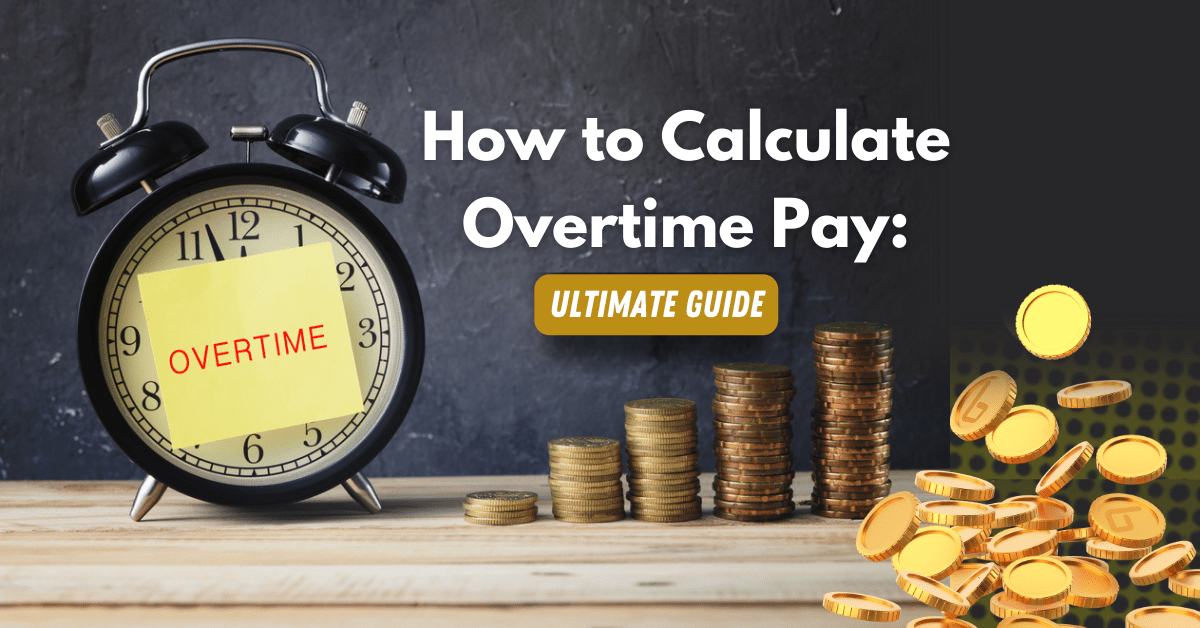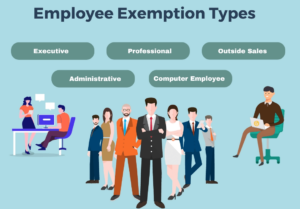
In today’s fast-paced work environment, it’s not uncommon for employees to put in extra hours to meet deadlines or handle increased workloads. Accurate calculation of overtime pay is essential when employees work beyond the threshold set by the Fair Labor Standards Act. This comprehensive guide will walk you through the intricacies of overtime pay, providing the knowledge to ensure you receive fair compensation for your extra efforts.
Understanding Overtime Pay
Imagine this scenario: you’ve just completed a long work week, including several late nights and early mornings. You eagerly await your paycheck, expecting a boost due to the extra hours you put in. However, upon receiving it, you notice that your overtime pay seems significantly lower than anticipated. Confusion sets in, and you wonder if there was an error in the calculation or if you misunderstood how overtime pay works.
This is a situation many employees find themselves in, highlighting the importance of understanding how to calculate overtime pay accurately.
Definition of Overtime Pay
Overtime pay refers to the additional compensation an employee receives for working beyond their regular work hours. It is an essential financial incentive for employees and ensures fair compensation for their dedication and extra effort.
The primary legislation at the federal level in the United States is the Fair Labor Standards Act (FLSA), which establishes minimum wage, overtime pay, and other employment standards. Additionally, individual states may have specific laws and regulations that supplement or go beyond the federal requirements.
The FLSA mandates that eligible employees be paid overtime wages for any hours worked beyond the standard 40-hour workweek. However, not all employees are entitled to overtime pay. The FLSA distinguishes between exempt and non-exempt employees based on specific criteria, such as job duties, salary level, and payment method.
Exempt vs. Non-exempt Employees
To determine eligibility for overtime pay, it’s crucial to understand the distinction between exempt and non-exempt employees.
Exempt Employees: Exempt employees are not entitled to overtime pay under the FLSA. They are exempt from overtime provisions due to the nature of their job duties, level of responsibility, and how they are paid. These employees typically hold executive, administrative, or professional positions and are compensated on a salary basis.
Non-exempt Employees: Non-exempt employees, on the other hand, are entitled to overtime pay when they work beyond the standard 40-hour workweek. These employees are usually paid hourly and perform job duties not qualifying for exemption under the FLSA. They may include hourly workers, clerical staff, and individuals in manual or labor-intensive roles.
Both employers and employees need to understand the distinction between exempt and non-exempt employees to ensure compliance with labor laws and avoid any potential wage violations.
Exemptions from Overtime Pay
While most employees are eligible for overtime pay, certain industries and job roles are exempt from these provisions.

The FLSA provides exemptions for specific categories of employees based on their job duties, salary level, and industry. Some common exemptions include:
- Executive Exemption: To qualify for the executive exemption, employees must primarily perform managerial duties, have the authority to hire and fire, and exercise independent judgment in their decision-making. They must also receive a salary above a certain threshold, which the Department of Labor periodically updates.
- Administrative Exemption: The administrative exemption applies to employees who primarily perform office or non-manual work directly related to the employer’s management or general business operations. They must exercise discretion and independent judgment on significant matters, and their salary must meet the minimum threshold set by the Department of Labor.
- Professional Exemption: The professional exemption covers employees who work in specific professions, such as doctors, lawyers, teachers, and architects. These individuals must have advanced knowledge and specialized education in their respective fields, and their work must require consistent exercise of discretion and judgment.
- Computer Employee Exemption: Employees working in computer-related roles, such as computer systems analysts, software engineers, and programmers, may qualify for the computer employee exemption. To be eligible, these employees must be paid at or above a specific salary level and primarily engage in computer-related duties.
- Outside Sales Exemption: Employees who make sales or solicit orders away from their employer’s place of business may be exempt from overtime pay under the outside sales exemption. They must regularly and customarily perform their duties outside the employer’s office or workplace.
Employers and employees alike need to familiarize themselves with the specific exemptions that apply to their industry and job roles to ensure compliance with the law.
How To Calculate Overtime Pay
Calculating overtime pay ensures employees receive fair compensation for their extra work hours. The process involves determining the regular pay rate, identifying the maximum hours for regular pay, and applying the appropriate formulas to calculate the overtime pay. In this section, we will explore each of these steps in detail.
Determining the Regular Rate of Pay
To calculate overtime pay, it’s essential first to determine the employee’s regular pay rate. The regular rate of pay serves as the baseline for overtime calculations. It includes all forms of compensation earned by the employee, such as hourly wages, salary, commissions, and non-discretionary bonuses. It’s important to note that certain types of payments, such as discretionary bonuses or gifts, may be excluded from the regular rate calculation.
- Hourly Wage Calculation: For employees who are paid hourly, determining the regular rate of pay is relatively straightforward. The regular rate is simply the employee’s hourly wage. For example, if an employee earns $15 per hour, their regular rate of pay is $15.
- Salary-based Calculation: Calculating the regular rate of pay for salaried employees requires a slightly different approach. To determine the regular rate, divide the employee’s weekly salary by the number of hours they are expected to work in a week. For instance, if an employee earns a weekly salary of $800 and is expected to work 40 hours per week, their regular rate of pay is $20 per hour.
It’s important to note that the regular rate of pay may vary from week to week for salaried employees who work varying hours. In such cases, the regular rate is calculated based on the actual hours worked each week.
Identifying the Maximum Hours for Regular Pay
To calculate overtime pay accurately, it’s crucial to determine the maximum hours an employee can work before entering overtime status. The standard set by the FLSA is 40 hours per workweek. However, it’s important to be aware that certain states may have regulations that differ from the federal standard. For instance, in California, non-exempt employees are entitled to daily overtime pay if they work more than eight hours daily.
California Overtime Laws
Calculating Overtime Pay for Hourly Employees
Once the regular rate of pay and maximum hours for regular pay has been determined, calculating overtime pay for hourly employees involves applying the appropriate formulas. The most common formula is the “time and a half” rule, where employees are paid one and a half times their regular rate for each hour worked beyond the maximum hours for regular pay.
For example, let’s consider an employee who earns $15 per hour and works 45 hours in a workweek. Assuming the maximum hours for regular pay is 40, the calculation for overtime pay would be as follows:
Regular Pay = 40 hours * $15 = $600 Overtime Pay = 5 hours * ($15 * 1.5) = $112.50
Therefore, the employee would receive $600 for regular pay and an additional $112.50 for overtime pay, resulting in a total of $712.50 for the week.
It’s important to note that some states may have different overtime pay rules, such as double-time pay for hours worked beyond a certain threshold. Employers and employees should familiarize themselves with the specific regulations applicable in their jurisdiction to ensure accurate calculations.
Calculating Overtime Pay for Salaried Employees
Calculating overtime pay for salaried employees can be more complex than for hourly employees. The first step is to determine the regular rate of pay for salaried non-exempt employees, as discussed earlier. Once the regular rate is established, calculating overtime pay involves multiplying the regular rate by 1.5 and then multiplying that amount by the number of overtime hours worked.
For instance, let’s consider a salaried employee who earns $800 per week, works 50 hours in a workweek, and has a regular rate of $20 per hour. Assuming the maximum hours for regular pay is 40, the calculation for overtime pay would be as follows:
Regular Pay = 40 hours * $20 = $800 Overtime Pay = 10 hours * ($20 * 1.5) = $300
Therefore, the employee would receive $800 for regular pay and an additional $300 for overtime pay, resulting in a total of $1,100 for the week.
Free Overtime Calculator
It’s important to note that employers must track the actual hours worked by salaried non-exempt employees to accurately calculate overtime pay. This may involve using time-tracking systems to ensure compliance with labor laws.
Factors Affecting Overtime Pay
Calculating overtime pay involves considering various factors that can impact an employee’s compensation for working beyond their regular hours. In this section, we will explore three key factors that affect overtime pay: working on holidays or weekends, exceeding maximum weekly hours, and working night shifts.
Overtime Pay for Working on Holidays or Weekends
Many employees find themselves working on holidays or weekends due to the nature of their job or industry demands. It’s important to understand how overtime pay is affected when working during these times.
Understanding Holiday Pay and Premium Rates: In some industries, employers may offer holiday pay, which is an additional compensation provided to employees who work on designated holidays. Holiday pay rates can vary depending on company policies, employment agreements, or collective bargaining agreements. These rates often include a premium that may be a specific percentage above the employee’s regular rate of pay, such as time and a half or double time.
State-Specific Regulations for Holiday Pay: It’s important to note that specific states may have their own regulations governing holiday pay. For instance, some states require employers to provide a certain number of paid holidays or mandate premium pay rates for work performed on holidays. Employers and employees should familiarize themselves with the applicable state laws to ensure compliance and fair compensation.
Overtime Pay for Exceeding Maximum Weekly Hours
While the standard set by the FLSA is a maximum of 40 hours per workweek for non-exempt employees, certain circumstances may require employees to work longer hours. When employees exceed the maximum weekly hours, they become eligible for overtime pay. However, the calculation can become more complex due to various factors.
Daily Overtime Rules and Their Impact: In some jurisdictions, such as California, employees may be entitled to daily overtime pay if they work more than a certain number of hours in a single day.
Free California Overtime Calculator
Calculating Overtime Pay for Extended Work Shifts: When employees work extended shifts that span multiple days, calculating overtime pay can be more complex. Some jurisdictions utilize an “8/80” rule, where overtime pay is triggered when an employee works more than eight hours in a single day or more than 80 hours during a consecutive 14-day period. Other jurisdictions may have their own rules and regulations regarding extended work shifts. Employers and employees should be aware of these rules to ensure accurate overtime calculations.
Overtime Pay for Working Night Shifts
Employees who work night shifts, often known as graveyard shifts or overnight shifts, may be entitled to additional compensation, known as night shift differentials. Night shift differentials are an extra amount of pay provided to employees who work during nighttime hours due to the potential impact on their health, well-being, and personal life.
Night Shift Differentials and Their Calculation: The calculation of night shift differentials varies depending on employer policies, industry standards, and collective bargaining agreements. Employers may provide a specific percentage increase to an employee’s regular rate of pay for each hour worked during the night shift. For example, an employer may offer a 10% night shift differential, which means that an employee’s regular rate of pay is increased by 10% for each hour worked during the night shift.
It’s important for both employers and employees to understand the additional compensation provided for working on holidays or weekends, exceeding maximum weekly hours, and working night shifts. By taking these factors into account, employers can ensure fair compensation for their employees, and employees can understand their rights and entitlements when it comes to overtime pay.
Compliance and Record-Keeping
Ensuring compliance with labor laws and maintaining accurate records of overtime hours are essential aspects of managing overtime pay effectively. In this section, we will explore the importance of compliance, the legal consequences of non-compliance, and the significance of record-keeping in relation to overtime pay.
Ensuring Compliance with Labor Laws
Compliance with labor laws is crucial to protecting the rights of employees and maintaining a fair and equitable working environment. Employers are legally obligated to adhere to the provisions outlined in the Fair Labor Standards Act (FLSA) and any applicable state-specific labor laws. Failure to comply with these laws can result in severe consequences for employers, including legal penalties, fines, and damage to their reputation.
By understanding and complying with labor laws, employers can demonstrate their commitment to fair employment practices and create a positive work environment. Compliance involves correctly classifying employees as exempt or non-exempt, accurately calculating overtime pay, and adhering to applicable regulations, such as daily overtime rules or night shift differential requirements.
The Legal Consequences of Non-Compliance
Non-compliance with labor laws can have serious legal repercussions for employers. If an employer fails to pay overtime wages or misclassifies employees as exempt when they should be non-exempt, employees may file complaints or lawsuits to seek compensation for unpaid overtime. In such cases, employers may be required to pay back wages, penalties, interest, and attorney fees.
Employers found violating labor laws may also face investigations by government agencies such as the Department of Labor or state labor departments. These investigations can result in audits of payroll records, fines, or even criminal charges in cases of willful violations. Additionally, non-compliance can damage a company’s reputation and negatively impact employee morale and retention.
To avoid legal consequences, employers should stay informed about labor laws, consult legal professionals if needed, and maintain accurate records to demonstrate compliance with overtime pay regulations.
Keeping Accurate Records of Overtime Hours
Accurate record-keeping is vital for both employers and employees to ensure transparency and accountability in overtime pay calculations. Here are some key reasons why maintaining detailed records of overtime hours is essential:
- Proof of Compliance: Accurate records prove that employers have complied with labor laws and paid employees the appropriate overtime wages. These records can help resolve disputes and demonstrate fair treatment of employees.
- Protection Against Legal Claims: Detailed records defend against potential legal claims related to unpaid overtime. If employees dispute their overtime pay, employers can refer to accurate records to support their calculations and show that they have fulfilled their obligations.
- Audit and Investigation Purposes: Government agencies, such as the Department of Labor, may conduct audits or investigations to ensure compliance with labor laws. Maintaining accurate records allows employers to provide necessary documentation promptly and demonstrate compliance during such audits.
- Data for Payroll and Reporting: Accurate records of overtime hours facilitate the smooth processing of payroll, ensuring employees are paid correctly and on time. These records also provide valuable data for internal reporting and analysis, enabling employers to track overtime costs and identify areas for improvement.
Employers can implement various methods to record overtime hours, such as electronic timekeeping systems, manual timesheets, or digital applications. Whichever method is chosen, it is essential to ensure that records are accurate, easily accessible, and securely stored for future reference.
By prioritizing compliance with labor laws and maintaining accurate records of overtime hours, employers can protect their employees’ rights, avoid legal consequences, and foster a fair and transparent work environment.
Conclusion
Calculating overtime pay accurately is essential to ensure that employees receive fair compensation for their extra work hours. By understanding the concepts of overtime pay, differentiating between exempt and non-exempt employees, and considering various factors that affect overtime pay, employers and employees can navigate the complexities of overtime calculations effectively.












